![]() As a reminder, passive drowning victims can be anywhere in the pool, face up, face down, at the surface, or below the surface. They could have been an active drowning victim that became unconscious because the lifeguards did not notice them or it could have been caused by something else like a medical problem (stroke, seizure, heart attack, etc), trauma (being jumped on by someone else in the pool), alcohol use, etc. Be sure to support the victim so their mouth and nose are out of the water.
As a reminder, passive drowning victims can be anywhere in the pool, face up, face down, at the surface, or below the surface. They could have been an active drowning victim that became unconscious because the lifeguards did not notice them or it could have been caused by something else like a medical problem (stroke, seizure, heart attack, etc), trauma (being jumped on by someone else in the pool), alcohol use, etc. Be sure to support the victim so their mouth and nose are out of the water.
Front Approach
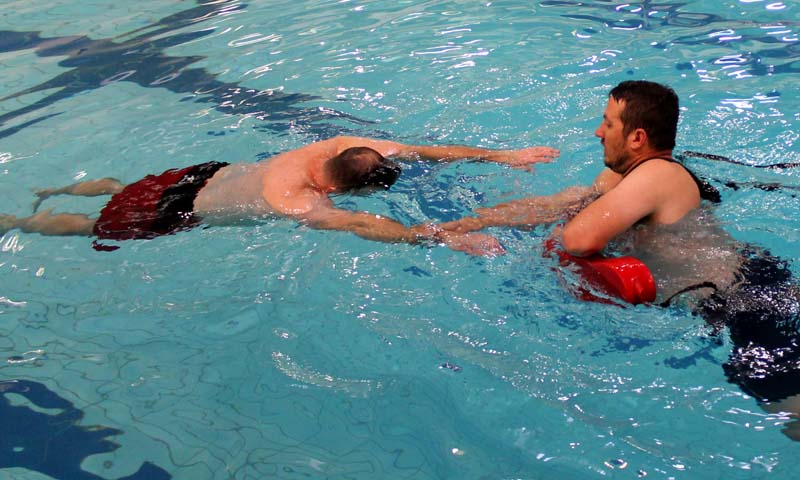 The lifeguard approaches the victim from the front. With the dominant hand, a lifeguard grabs the opposite hand of the victim.
The lifeguard approaches the victim from the front. With the dominant hand, a lifeguard grabs the opposite hand of the victim.
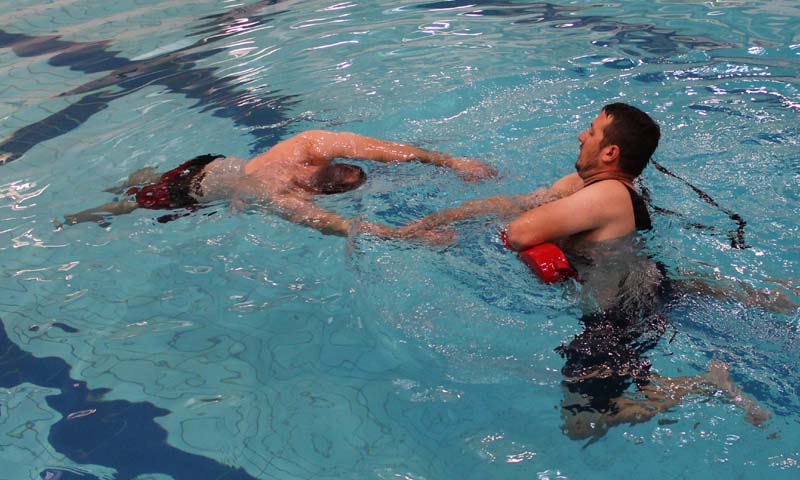 While the lifeguard begins to rotate the victim face up, the rescue tube is extended while the lifeguard pulls the victim towards him or her.
While the lifeguard begins to rotate the victim face up, the rescue tube is extended while the lifeguard pulls the victim towards him or her.
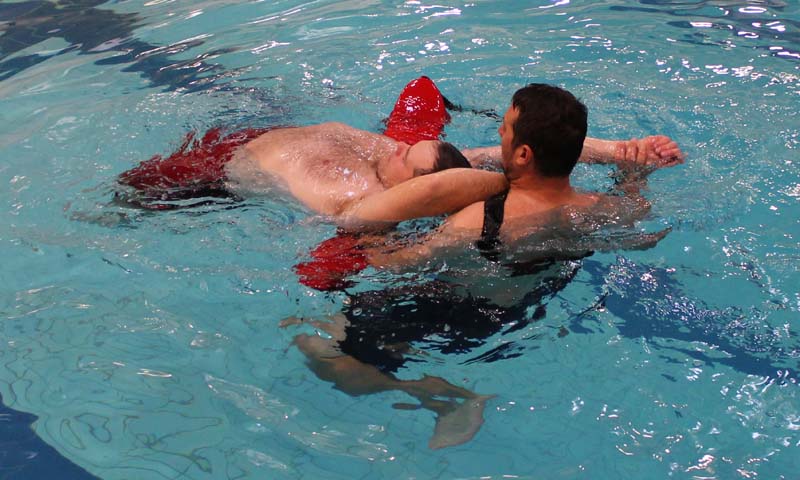 The rescue tube is placed, at a minimum, past the shoulders, but ideally at the victim’s lower back.
The rescue tube is placed, at a minimum, past the shoulders, but ideally at the victim’s lower back.
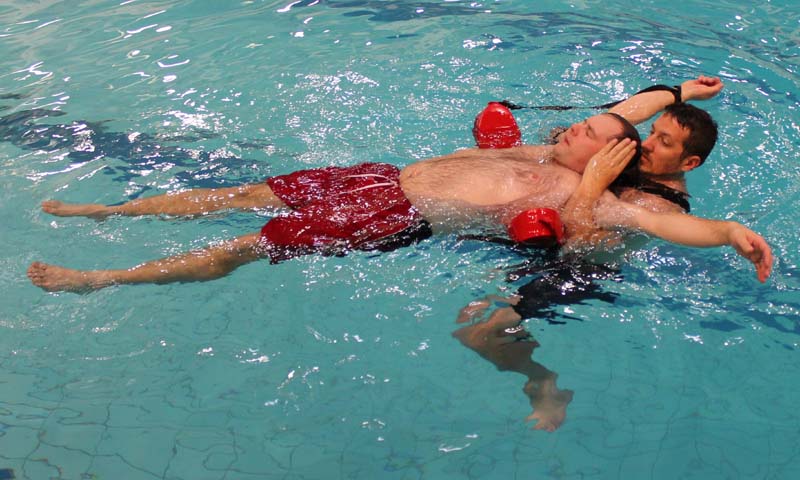 The rescuer is sure to support the victim’s head with their hands. The lifeguard’s arms should be placed underneath the victim’s armpits while kicking the victim to the nearest wall or designated exit point.
The rescuer is sure to support the victim’s head with their hands. The lifeguard’s arms should be placed underneath the victim’s armpits while kicking the victim to the nearest wall or designated exit point.
Rear Approach
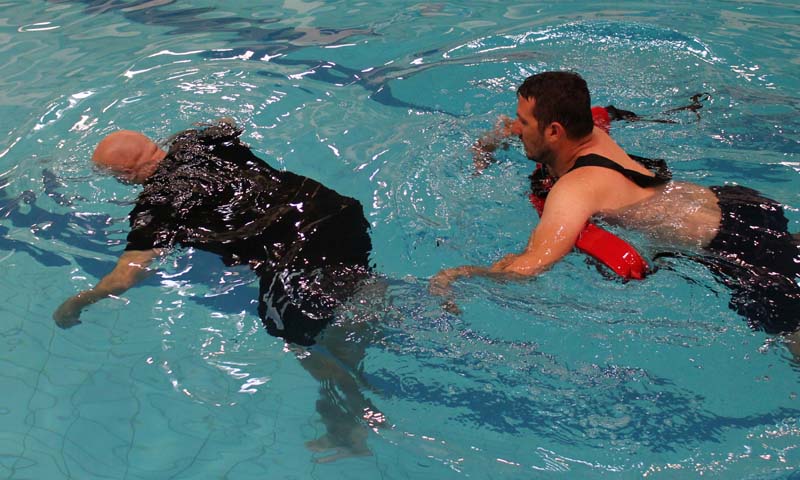 A lifeguard approaches the victim from behind and places the rescue tube at a minimum underneath the victim’s back.
A lifeguard approaches the victim from behind and places the rescue tube at a minimum underneath the victim’s back.
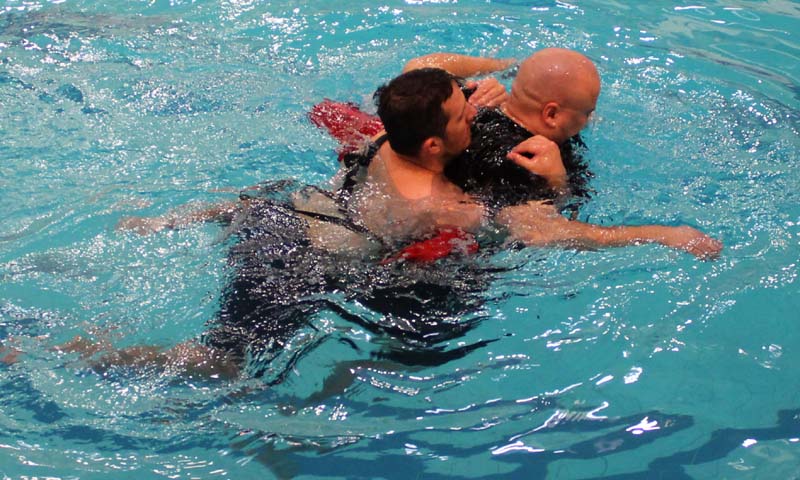 The lifeguard pulls the victim onto the rescue tube. To prevent injury, a lifeguard should make sure their head is to one side of the victim’s to make sure they are not struck in the face by the victim when placing them on the tube.
The lifeguard pulls the victim onto the rescue tube. To prevent injury, a lifeguard should make sure their head is to one side of the victim’s to make sure they are not struck in the face by the victim when placing them on the tube.
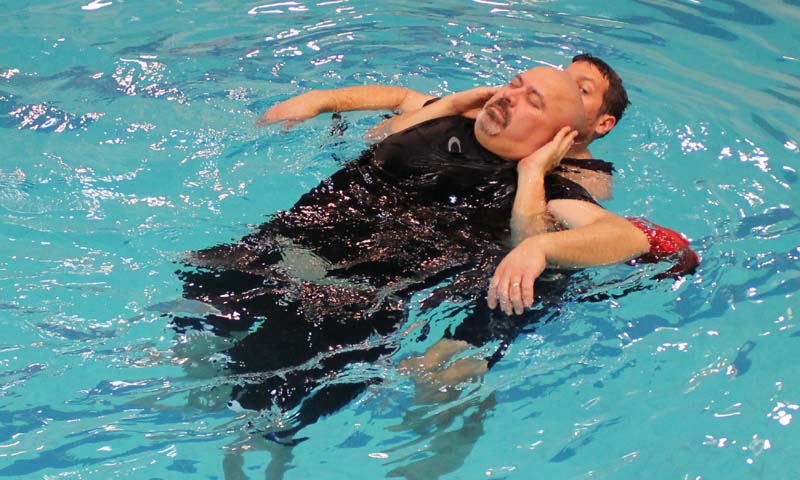 The rescuer is sure to support the victim’s head with their hands. The lifeguard’s arms should be placed underneath the victim’s armpits while kicking the victim to the nearest wall or designated exit point.
The rescuer is sure to support the victim’s head with their hands. The lifeguard’s arms should be placed underneath the victim’s armpits while kicking the victim to the nearest wall or designated exit point.
Approach Without a Change in Direction
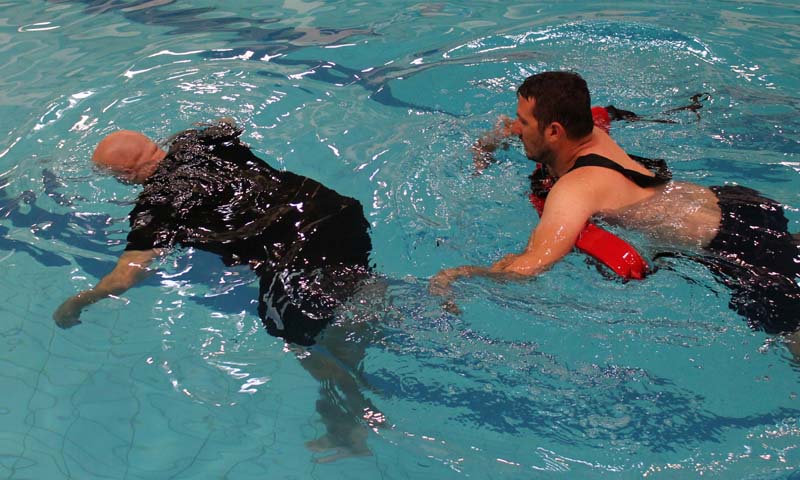 A lifeguard approaches the victim from behind and places the rescue tube at a minimum underneath the victim’s back.
A lifeguard approaches the victim from behind and places the rescue tube at a minimum underneath the victim’s back.
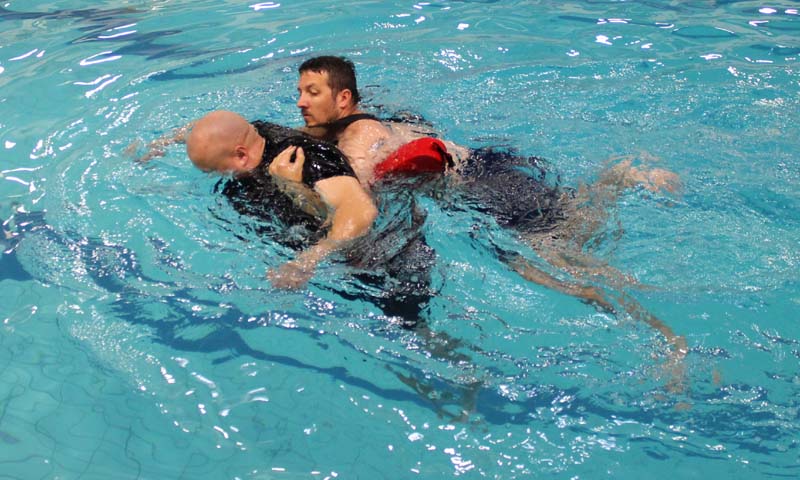 As the lifeguard grabs the victim, he or she rolls the victim face up while continuing to swim the in the same direction.
As the lifeguard grabs the victim, he or she rolls the victim face up while continuing to swim the in the same direction.
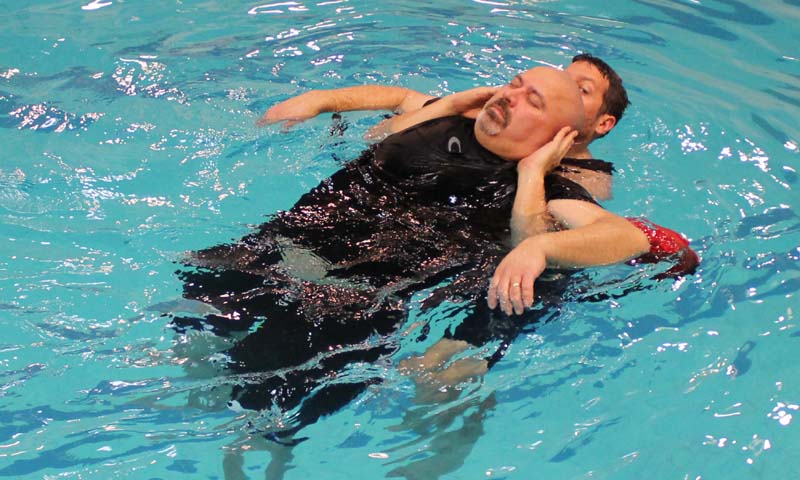 The rescuer is sure to support the victim’s head with their hands. The lifeguard’s arms should be placed underneath the victim’s armpits while kicking the victim to the nearest wall or designated exit point.
The rescuer is sure to support the victim’s head with their hands. The lifeguard’s arms should be placed underneath the victim’s armpits while kicking the victim to the nearest wall or designated exit point.
Notes:
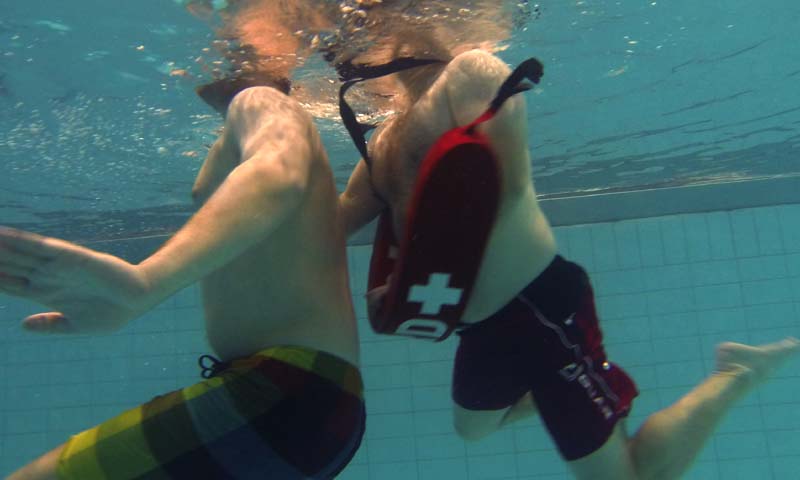
In most cases, the ideal placement of the rescue tube is at the lower part of the victim’s back. Placing the rescue tube this low does a better job of supporting the victim. It also allows the victim’s feet to come up near the surface and a lifeguard has a much easier time moving a victim to the side.
One way to place the victim on the rescue tube is to grab the victim underneath one armpit while placing the tube with the other arm and pulling the victim onto the rescue tube.
Shallow Water Passive Victim
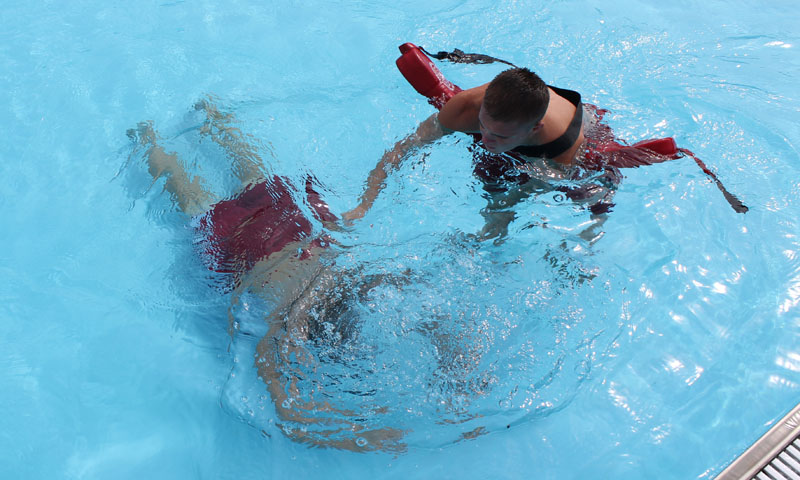 Without taking off the rescue tube, the lifeguard submerges and grabs the victim in a head splint and brings them to the surface.
Without taking off the rescue tube, the lifeguard submerges and grabs the victim in a head splint and brings them to the surface. 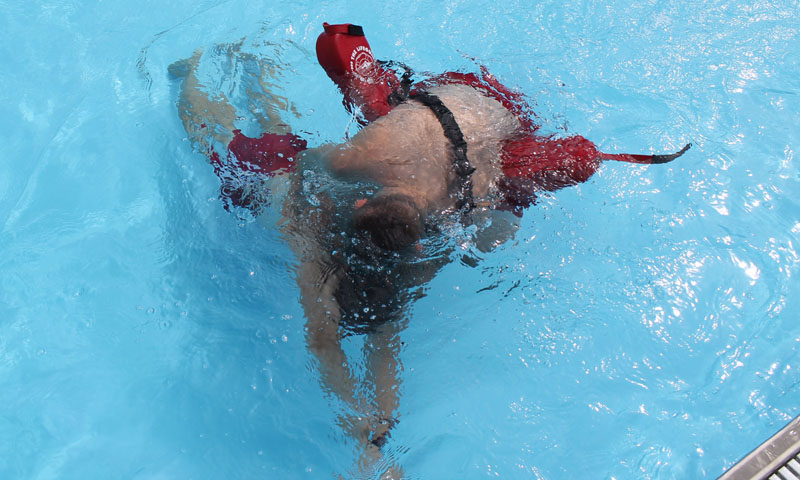 If the victim is face down, roll the victim face up as they are brought to the surface.
If the victim is face down, roll the victim face up as they are brought to the surface.
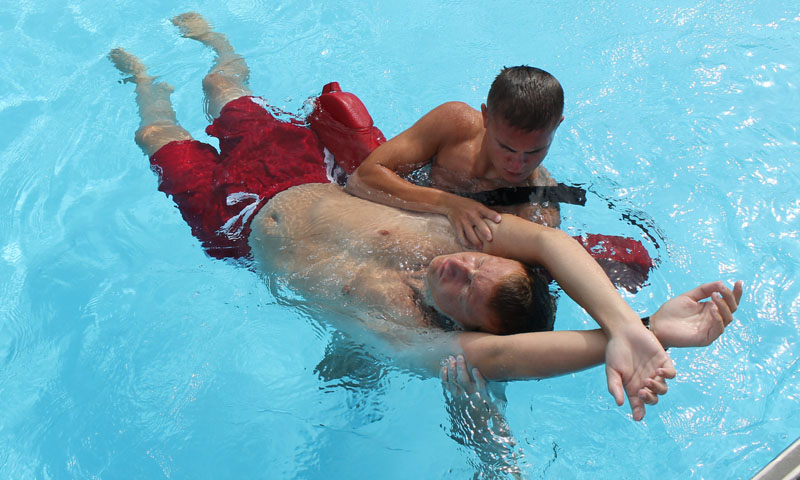 If the victim is suspected of having a spinal cord injury, follow the backboarding steps to remove the victim from the water.
If the victim is suspected of having a spinal cord injury, follow the backboarding steps to remove the victim from the water.
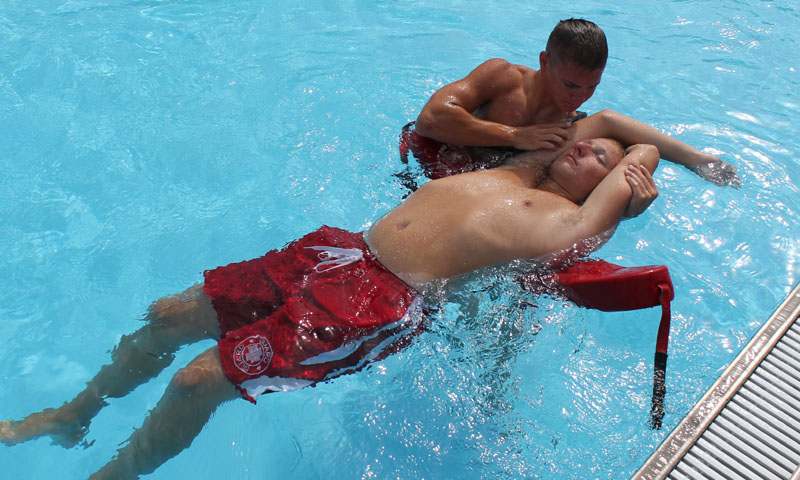 If the victim is not suspected of having a spinal cord injury, place a rescue tube underneath the victim and follow the steps to remove a passive drowning victim from the water.
If the victim is not suspected of having a spinal cord injury, place a rescue tube underneath the victim and follow the steps to remove a passive drowning victim from the water.
